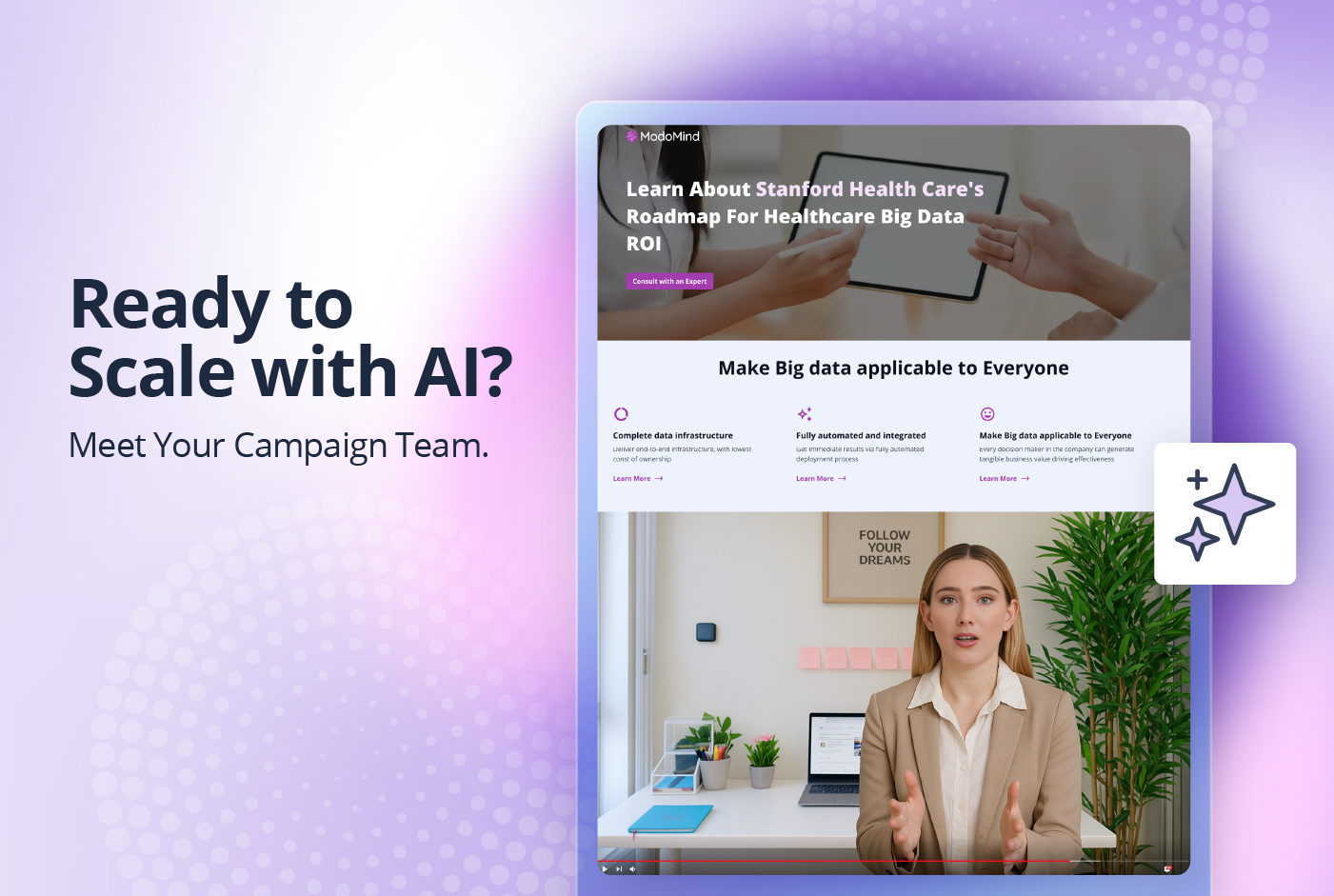B2B marketing leaders are really standing at a crossroads.
The world of B2B marketing — always fragmented and competitive — has only gotten more difficult to navigate. Collectively, most marketers were just beginning to take a more sophisticated approach to the B2B buyer experience — and tailoring it for a digital-first era — when the pandemic hit. When that happened, too many were caught flatfooted, forced to shift away from a traditional posture as quickly as possible in favor of increased reliance on digital. Yet many didn’t go far enough. Now we’re hearing more than one reputable economist and finance industry leader flag the signs of a forthcoming recession. Experienced marketers know what that means: we’ll need to do a lot more with a lot less.
For B2B marketing leaders, it’s no longer a question of which way to head. Continuing to walk the same path as always — one where headquarters drives everything, marketers go rogue, data isn’t adequately captured and utilized, and no customization exists — is a grave mistake. Fortunately, the ways to adapt to this new digital reality are clear, straightforward and there for the savvy marketer’s taking. Our customers win — and we do too — when we empower every marketer across every facet of the organization with a self-serve way to create amazing experiences for their buyers.
We’re in the midst of a technology-driven B2B buyer experience revolution. Here’s why — and how to lead the charge to emerge successful on the other side.
B2B clients want the same personal touch they experience as consumers
As consumers, we’ve all been conditioned to expect maximum personalization, whether it’s tailored vacation rental recommendations (Airbnb), food delivery histories and restaurant recommendations (Doordash), or our year in review from the music we've been listening to (Spotify). Much to its own detriment, however, the B2B buyer experience has lagged substantially behind B2C’s more high-touch, concierge flavor.
To be sure, enterprises offer greater complexity to overcome — from geographies, industries, segments, and products, to the number of buyers required to close a single deal. And the typical B2B marketing organization is also incredibly centralized, which unsurprisingly produces messaging and campaigns that feel irrelevant to buyers. But those challenges aren’t an excuse to double down on business as usual, especially given that 66 percent of people expect “companies to understand their needs and expectations,” according to 2020 research from Salesforce.
The impact of operating without oversight is real
Frontline marketers — those closest to the customers on the ground — are keenly aware that the lack of personalization and context greatly diminishes their chances for success. That’s why they take matters into their own hands, using rogue tools and relying on expensive manual labor delivered on their own or by agencies to create web assets that may or may not align with brand standards.
Lack of cohesion destroys visibility
This disconnected way of working means marketing leaders don’t have the opportunity to capture the data associated with these rogue tools and web sites carrying videos, webinars, blogs, campaigns, and more. That substantially limits their ability to analyze and shape a smarter overall approach to marketing. Imagine what you could do across your organization if you better understood your prospects’ and customers’ digital behavior and reflected topics of interest across touchpoints with your brand, for example.
So what’s to be done about all this?
A contextual approach to a B2B buyer experience is well within reach for any marketing organization. It’s about:
- Empowering frontline marketers on the ground to operate more independently by arming them with easy-to-use technology to create any type of personalized digital experience they want. Your B2B marketing teams should be able to target any account or audience in a way that’s inclusive of language, cultural, country, regional, and industry context.
Through this technology, they should be able to easily leverage behavioral data and experience tracking to quickly curate rich digital experiences in alignment with brand standards. This obviates the need for both oversight and for going rogue. Everybody —from marketing at headquarters all the way out to the frontline marketers — wins.
- Putting everyone on the same footing, which means marketing ops and revops will finally get the unified framework — with one source of data, one common taxonomy, and ultimately a shared understanding to actually see what’s happening across the business. They’ll get 100x the data they did before, in a way that allows them to harness insights that better inform strategy.
- Ensuring marketing teams are more productive, impactful, and aligned. A single-platform approach (that plays well with other tools in your martech stack) cuts through the noise and allows team members to deliver much more, with much less effort, cost, and difficulty. That will prove especially useful given the market signals we’re seeing: budget cuts are a near-certainty. Yet with the right technology, those budget cuts could be felt far less because marketing will drive more results while reducing costs.
The optimal B2B buyer experience is increasingly taking its cues from B2C; it’s digital-forward, personalized, and largely self serve. For marketers, the ability to deliver brand-compliant content that’s perfectly attuned to each buyer’s unique context, timing and intent signals is more important than ever before. It’s where customer expectation already is — and it’s where every intelligent marketing organization will eventually be.
We’ve been preparing for this moment for a long time. We’re ready. Are you? We recently unveiled Folloze Buyer Experience Platform 3.0 to put even more powerful tools in the hands of B2B marketers.
Interested in learning more about the future of the B2B buyer experience and how technology can get you there? We’re architecting those solutions – learn more here.



